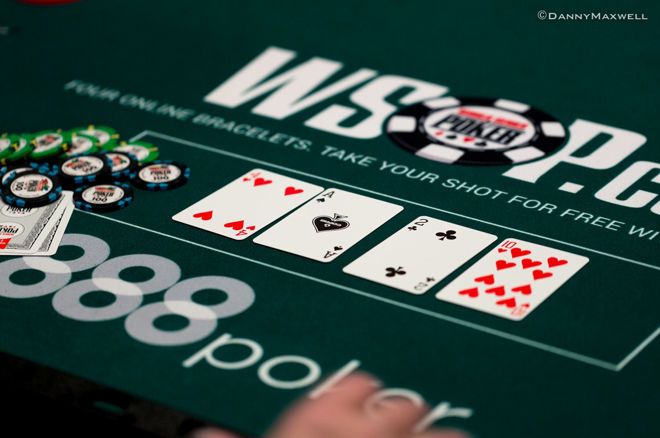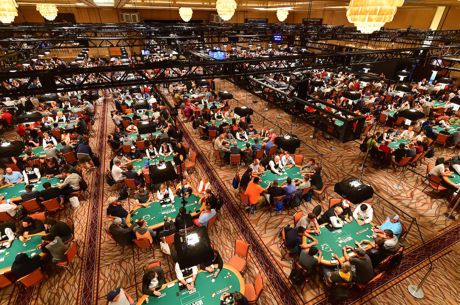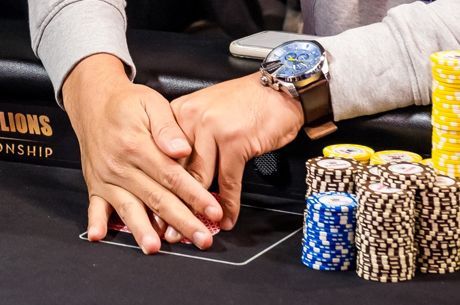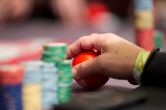The Importance of Aggression: Semi-Bluffing

A semi-bluff is a bluff with a back-up plan. It's a very useful arrow to have in your quiver of poker tactics. Simply put, a semi-bluff is a bluff that may also improve on the next card to the best hand. It is valuable for three reasons, chiefly.
First, it may succeed as a bluff, eliciting a fold right away and earning you the pot.
Second, even if it doesn't succeed as a bluff it may succeed by hitting a winning hand on a subsequent street.
And third, it will help to disguise the winning hand by initiating the betting prior to having the hand hit, thus allowing you to extract additional bets from your unsuspecting opponent.
Here's an example of a semi-bluff in action on the flop.
You are a tight-aggressive player in a $1/$3 no-limit hold'em cash game with lots of loose-passive opponents. You are dealt A♥4♥ in the cutoff. Three players in front of you call the $3 big blind, you call as well as do the button and small blind, and the big blind checks, meaning seven players see the flop with $21 in the middle.
The flop is K♥8♥2♦.
The first three players check, then the one acting just before you bets $15. With your ace-high flush draw you contemplate calling for $15. But you decide to mix up your play by raising to $40. That would be a semi-bluff.
You are raising to represent a hand stronger than you have with the hope that the other players will fold, viewing it as an indication that you are extremely strong — perhaps holding A-K or K-8 or even a set. You are not confident that your raise will succeed. Even so, with your tight image, you gauge your chances of succeeding as moderate — perhaps 40 percent or so.
But it's not the only way you can win. If it were, it wouldn't be worth it. You'd have to win this bet a little more than 70 percent of the time for it to be profitable.
Here, though, you can win if you hit a flush card on the turn or river, something that will happen roughly 38 percent of the time. That means in addition to winning as a bluff an estimated 40 percent of the time, of the remaining 60 percent of the time you will also win some of the time as well — i.e., the 38 percent of the time when your flush comes in on the turn or river.
Does that make the bet worthwhile?
We can answer the question by doing some quick math. You estimate that when you raise to $40, all of your opponents will fold and you'll win the $36 pot 40 percent of the time. 40 percent of $36 = $14.40, so as a bluff alone, the action isn't warranted.
However, the remaining 60 percent of the time you don't always lose, and when you improve to a flush on the turn or river as you will do 38 percent of the time, you'll almost surely win the pot of $61 ($36 plus your opponent's call of $25). 38% of $61 = $23.18 . Your net winnings when you add the two together ($14.40 plus $23.18) is $37.58.
At first glance, you might conclude that since the semi-bluff cost you $40 but the net return is only $37.58, based on your estimates of your chance of your bluff's success and your likelihood of improvement when you call, that this semi-bluff is better left unexecuted. But that would be a mistake.
It's a mistake because of the third way a semi-bluff helps you win money.
The third way is that the semi-bluff disguises the true strength of your hand when you hit it, making it highly likely that you can win additional money when your hand does come in.
Since you raised on the flop, if you hit your flush on the turn or river, your opponent may well not believe that you are betting with a flush. If he has trips or two pair, for example, he may call your bet, figuring that you had a hand you made on the flop before a flush was possible, and that's why you raised.
Unless he is at least somewhat sophisticated, he will conclude that it's unlikely you hit your flush, since your raise on the flop indicated a strong hand then, before a flush was possible. Hence your bet on the turn or river is likely to win you some additional money that you can add to your profit in the hand.
In the above hand, with you holding A♥4♥ and a flop of K♥8♥2♦, it is reasonable to assume your opponent who calls your $40 on the flop will also call $40 bets on the turn and river, earning you considerably more than enough to justify your $40 bet on flop.
To be sure, semi-bluffs don't always make sense when you are drawing to a big hand. Sometimes it's better just to call. If, for example, in the illustrated hand you concluded that by calling the $25 you were likely to get a number of other players to come along with a call as well, making the likely payoff when you hit your hand much bigger, it might make sense just to make that call rather than go for the semi-bluff raise.
But a semi-bluff is surely an option you want to be able to consider when you are playing a drawing hand.
Ashley Adams has been playing poker for 50 years and writing about it since 2000. He is the author of hundreds of articles and two books, Winning 7-Card Stud (Kensington 2003) and Winning No-Limit Hold'em (Lighthouse 2012). He is also the host of poker radio show House of Cards. See www.houseofcardsradio.com for broadcast times, stations, and podcasts.









